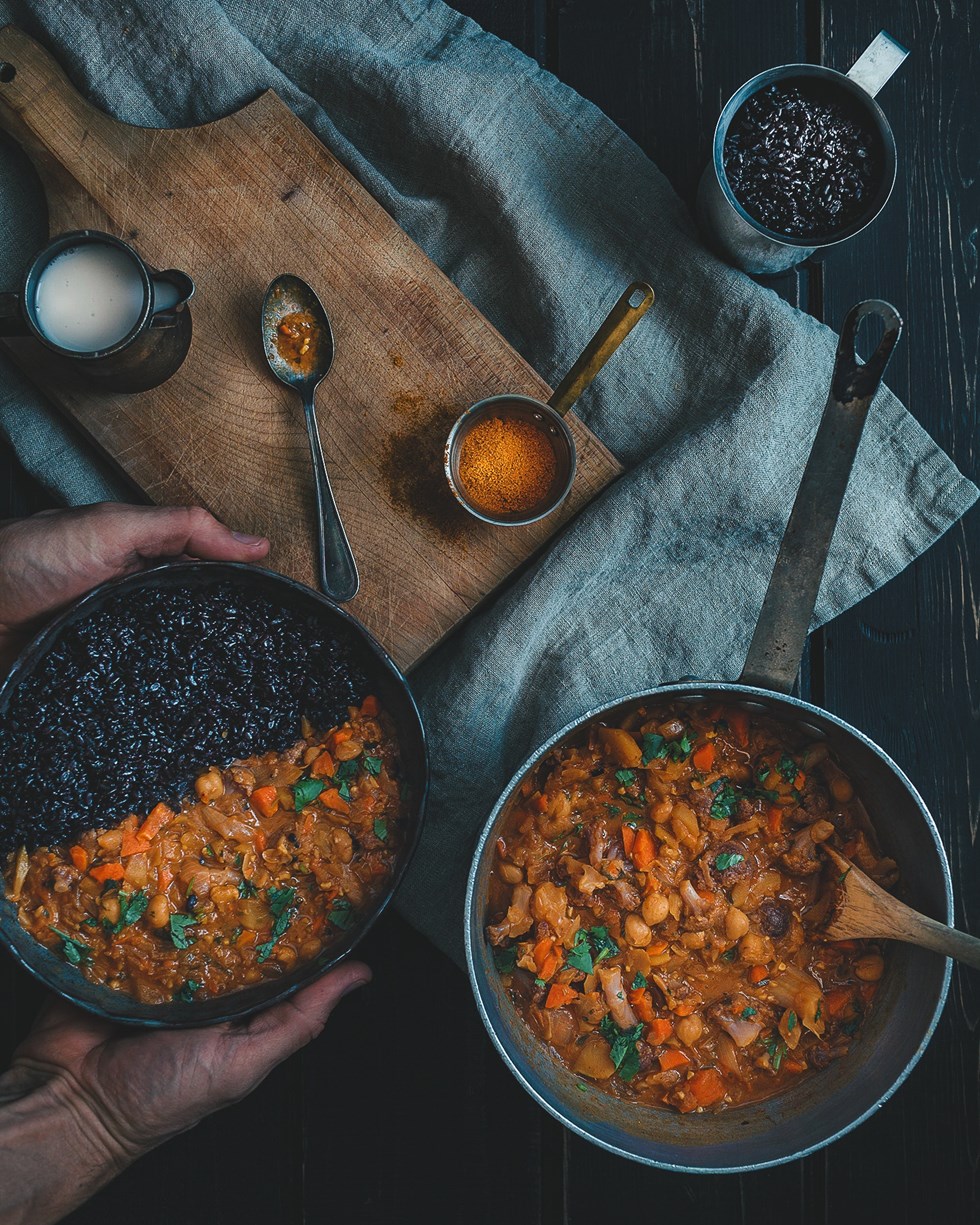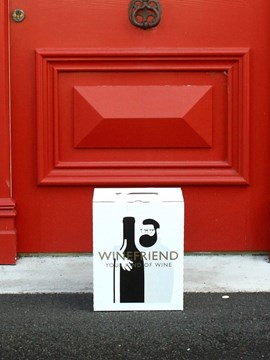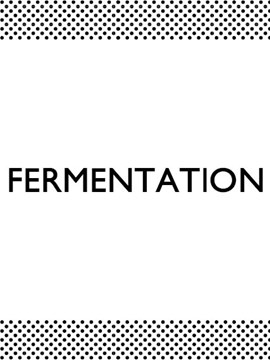Big stakes are at play when you’re choosing a wine to pair with spicy dishes. Go too bold, and you risk overwhelming the rich and intense flavours entirely — but pour a wine without enough punch (or with too much of the wrong thing), and you’ll accentuate the very aspects of the food that you’re trying to balance out.
But we all love a bit of heat in our sustenance now and then, so we’re here to offer some tips on how to match wine with spicy foods, as well as some pairing suggestions to make things even easier. Get ready to spice up your life!
Take it from Def Leppard, and pour some sugar into your glass.
The first tip most wine experts will offer you in the spicy food pairing arena is to reach for a bottle on the sweeter end of the spectrum.
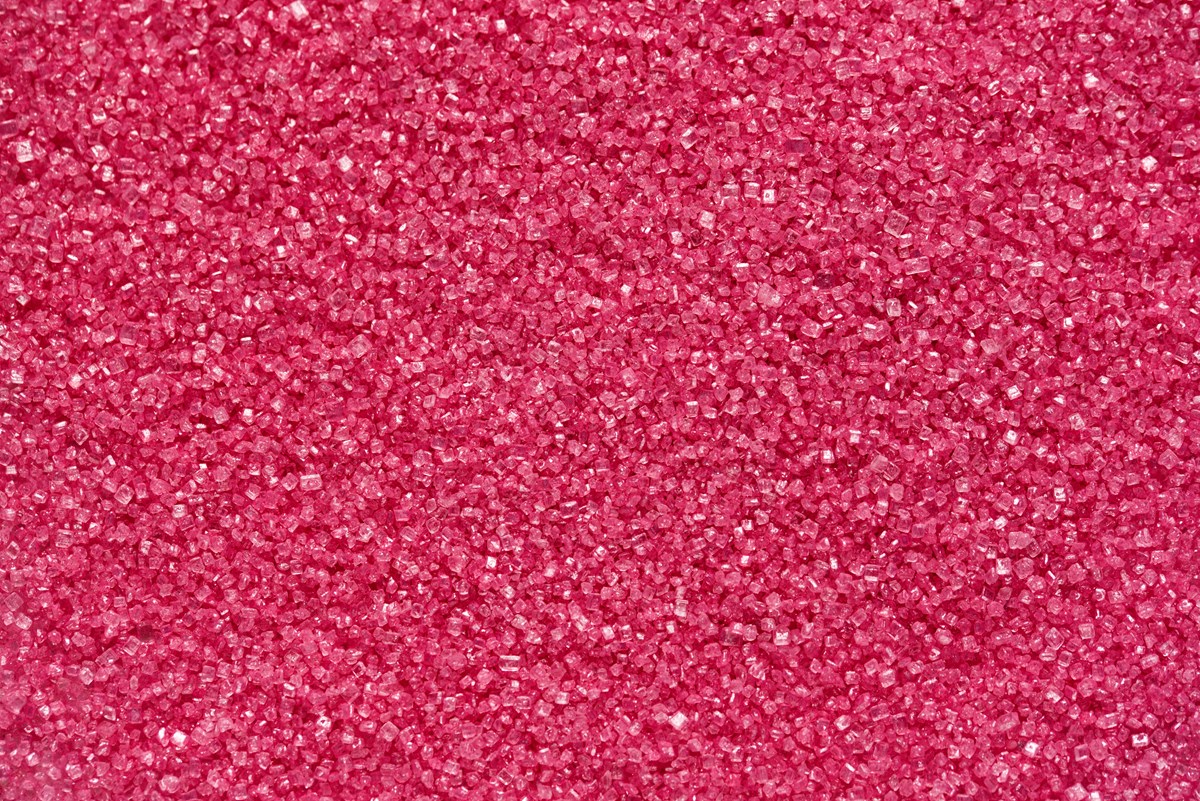
Photo by Joanna Kosinska on Unsplash
Off-dry and sweeter wines tend to have heavier, more viscous textures that actually coat your tongue and mouth — so they’re ideal for tamping down and soothing that burn you feel when you’re ingesting spice. And because that sweetness actually contrasts with the common flavours in spicy dishes, it won’t overpower the food or give you any sort of strange taste sensations.
But are sweet wines your only option? Not by a long shot. Let’s talk.
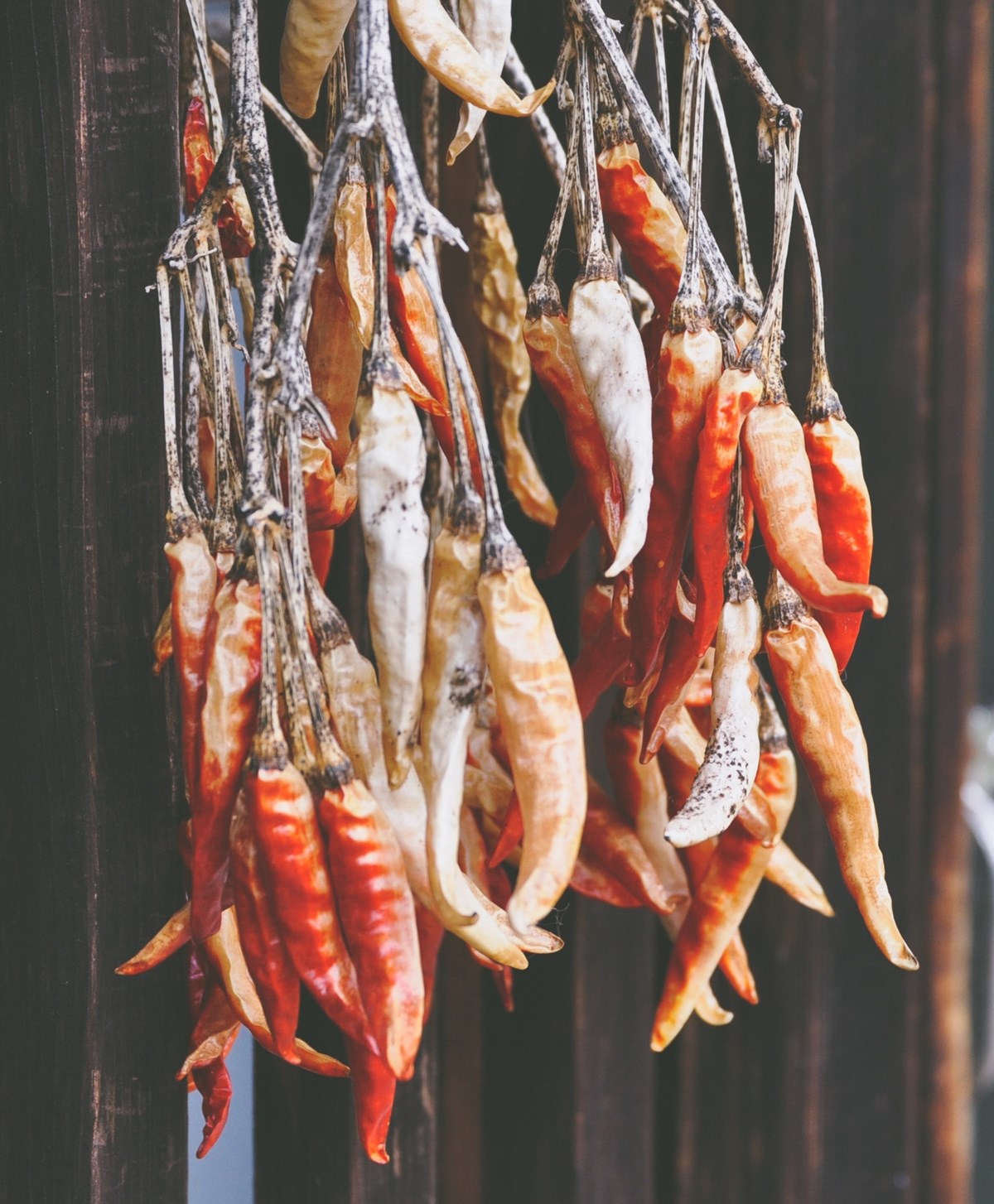
Pick a side: complement or contrast.
The name of the game when it comes to hot dishes is flavour. There’s nothing meek or subtle about the vivacity and intensity of spice, so there can be nothing meek or subtle about you when you’re choosing your wine.
You either need to complement the flavours with a wine that’ll enhance them (without rendering them unpleasant or overwhelming) or contrast the flavours with a wine that’ll work to balance them. There’s no in-between!
So what do we mean when we say complement and contrast?
A wine that complements spicy flavours will mirror them, in a sense, by reflecting the primary spice compounds in the dish — savoury like coriander, citrusy like ginger, smoky like pepper, etc.
A wine that contrasts the flavours, on the other hand, will balance the spice compounds by opposing them. It’ll provide a freshness that lightens a rich dish, an acidity that cuts through a greasy dish, or a sweetness that counteracts a spicy dish — to name a few examples.
The direction you go in will depend entirely on your personal tastes — but regardless of whether you’re complementing or contrasting, a good rule of thumb is to identify one or two of the main flavours in the dish and match the wine to those flavours.
So if you’re about to chow down on a buttery curry with some heat, for example, balance the creaminess and the spice with a clean, crisp, off-dry white such as a riesling, or emphasise the flavours with a slightly spicy, weightier wine such as a grenache blanc or chardonnay.
But speaking of chardonnay — if you pair a chard with any spicy food, steer clear of the oak bombs. There are also a few other common wine characteristics you should stay away from. Here they are:
Avoid intense oak, strong tannins, and high alcohol.
Each of these wine traits accentuates spice and heat in ways that’ll have you making an ‘ick’ face.
If oak dominates a wine, it’s pretty likely it’ll dominate your wine-and-food experience, too. It’ll also clash with the flavours in your dish for an altogether suboptimal meal.
Tannins are what dry out your mouth and impart that sort of chalky, bitter taste when you’re sipping on a wine. They’re usually a good thing as they lend structure and complexity to said wine — but when it comes to spicy foods, dry and bitter is pretty much the opposite of what you’re aiming for.
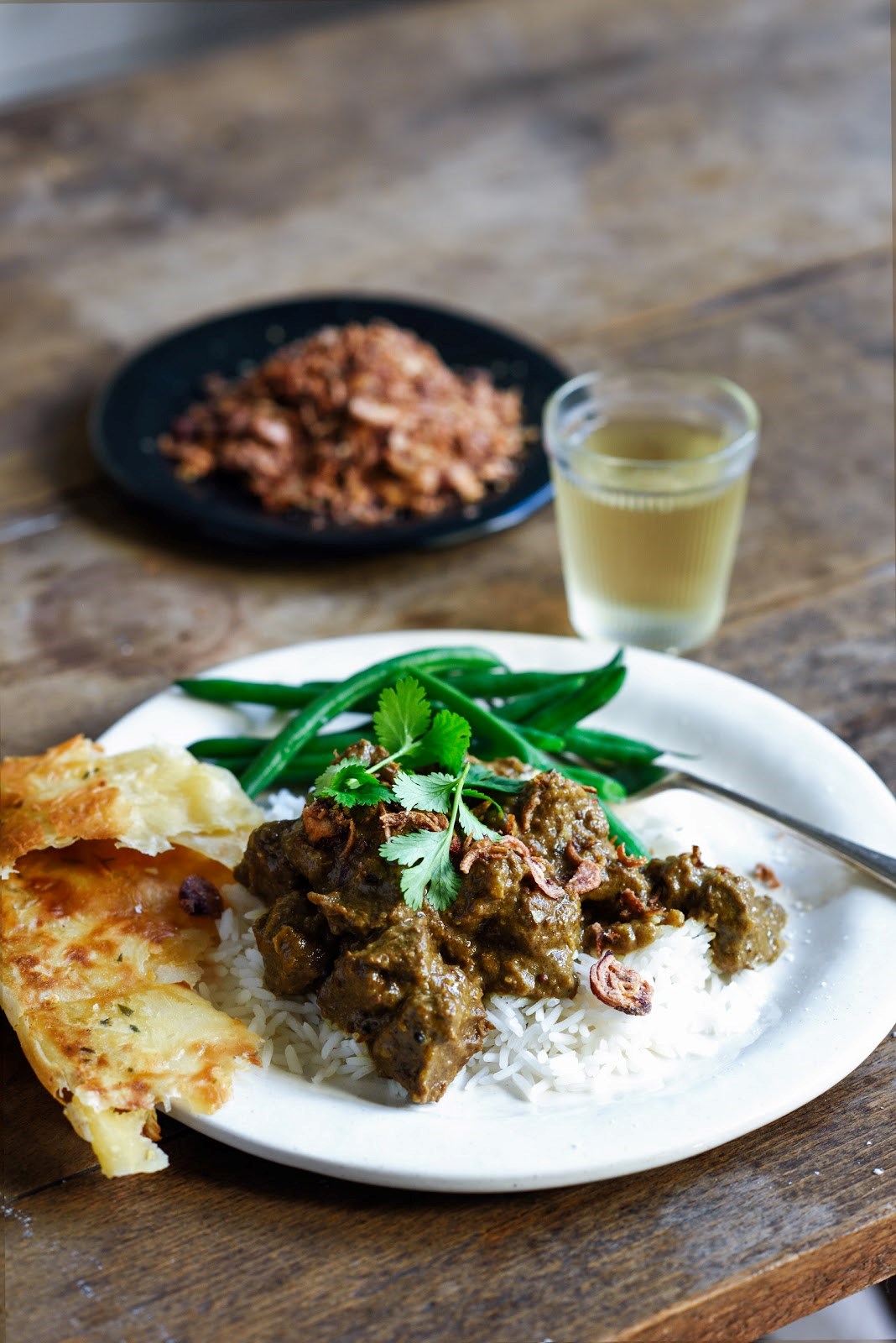
Spicy beef curry! Photo courtesy of Sarah Tuck // @fromthekitchen
And as for high alcohol? High-ABV wines literally act as heat strengtheners, so they’ll amplify whatever spice is in your food and likely have you breaking out in a sweat.
White wines tend to run lower in alcohol and tannins (the latter because the juice sees less contact with the skins, seeds, and stems of the grapes — which is where tannins come from), so you only really need to pay particular attention to these if you decide to pair your spice with a red wine. If that’s the case, shoot for options with medium to low tannins and ABVs in the 12% to 13% range.
Now that we’re talking about reds: what are some good options for our red lovers out there?
If you're going red, opt for soft and fruity.
We’ll be honest: it’s far more common to see white wines paired with spicy foods than red wines. But if there’s not a thing in this world that could tempt you to pop open a chilled riesling or viognier, fear not! Reds can definitely play the spicy pairing game, as long as you stick to a few rules.
As we mentioned, set your sights low on the tannin and alcohol scales. The oak rule applies here, too, as reds such as cabernet sauvignon and malbec often show heavy oakiness from barrel aging.
Once you’ve got those three benchmarks in mind, consider going for lighter-bodied, softer, fruitier reds such as pinot noir. This style will do a lot to balance the heat while providing a pleasant plushness that acts similar to the weightier textures of white wines more commonly paired with spicy dishes.
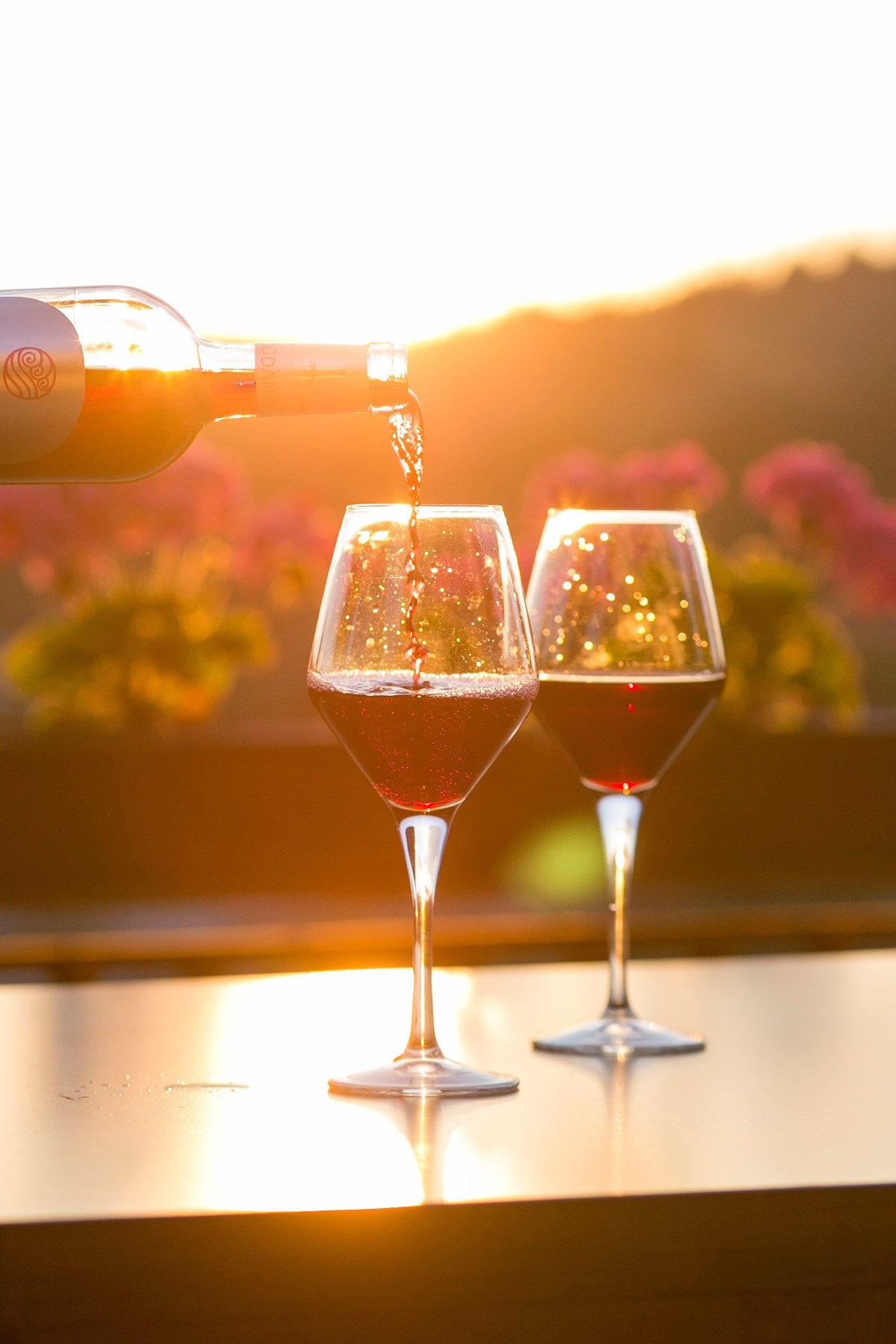
Photo by photo-nic.co.uk nic on Unsplash
If that doesn’t sound up your alley, you can certainly go the complementary route — such as pairing smoky, sweeter, peppery flavours with a glass of similarly endowed shiraz or tempranillo. But be wary of the bolder styles this route necessitates, as they’re frequent companions to the three don’ts we’ve discussed.

Examples galore!
Now that you’ve got some good tips for pairing wine with spicy food, we thought we’d make things that much easier by providing you with a few ready-to-go examples. These will pretty much always work:
- Riesling
- Gewürztraminer
- Rosé
- Albariño
- Viognier
- Pinot gris
- Pinot noir
- Shiraz
So go for it, spicy food lovers! And be sure to tag us in your pairing photos on social so we can see what our WineFriends are up to.
Interested in more food and wine pairings? Each WineFriend bottle comes with a colourful description that includes an ideal food match. Head here to join us!
